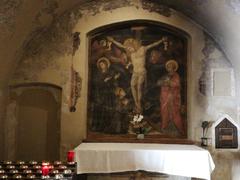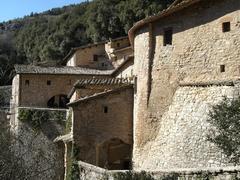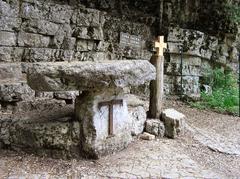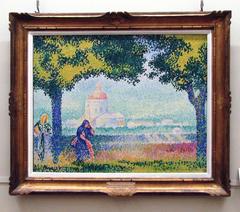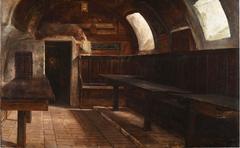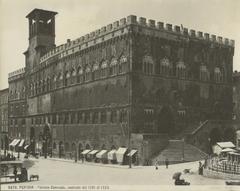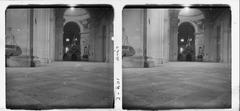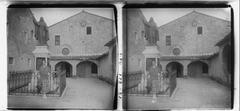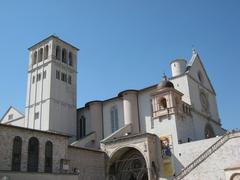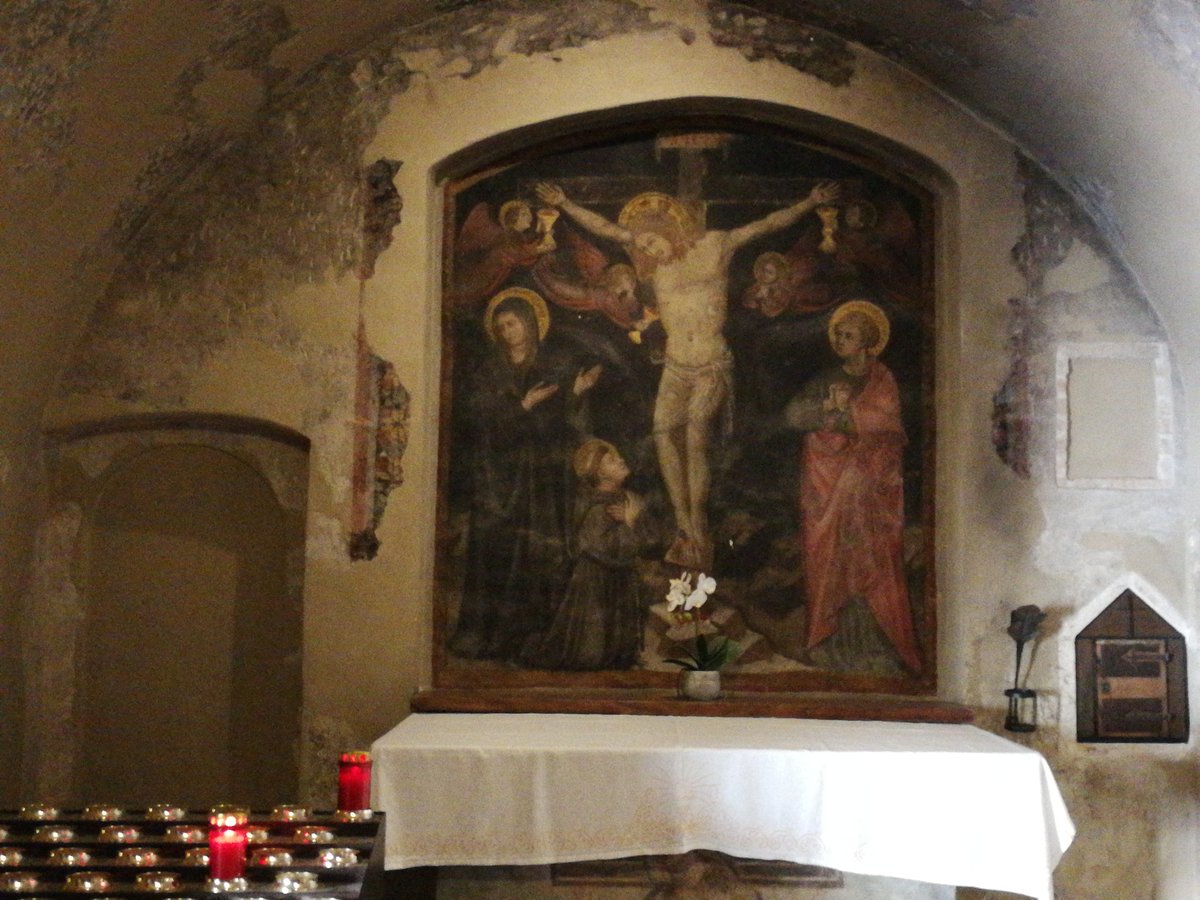
Eremo delle Carceri Visiting Hours, Tickets, and Guide
Date: 18/07/2024
Introduction
Nestled on the slopes of Mount Subasio near Assisi, Italy, the Eremo delle Carceri (Hermitage of the Prisons) stands as a profound sanctuary of peace, spirituality, and historical significance. This secluded monastery, once a haven for hermits seeking solitude, became a pivotal retreat for St. Francis of Assisi in the early 13th century (Visiting Eremo delle Carceri). St. Francis, renowned for his deep connection with nature and his dedication to a life of simplicity and poverty, found solace in the natural caves and the serene environment of this hermitage. The name ‘Carceri,’ meaning ‘prisons,’ reflects the voluntary seclusion embraced by early hermits and later by St. Francis and his followers.
The Eremo delle Carceri is not just a historical site but a living testament to Franciscan values. Its architecture harmonizes with the natural landscape, embodying simplicity and humility, while the surrounding dense forest of oak and ilex trees fosters an atmosphere of profound peace and spiritual reflection (Exploring Eremo delle Carceri). This sanctuary has evolved from rudimentary caves to a modest yet significant hermitage, largely due to contributions from St. Bernardino of Siena in the 15th century, who added a small church, a convent, and a refectory, thereby supporting a growing community of Franciscan friars.
Today, the Eremo delle Carceri continues to attract pilgrims and visitors from around the world, offering guided tours, spiritual retreats, and a tranquil environment for contemplation and prayer. This comprehensive guide aims to provide essential visitor information, travel tips, and insights into the site’s cultural and religious significance, ensuring a meaningful and enriching experience for all who visit.
Table of Contents
- History and Significance
- Visitor Information
- Travel Tips
- Nearby Attractions
- Accessibility
- A Place of Pilgrimage and Reflection
- Experiencing the Eremo delle Carceri
- Frequently Asked Questions
History and Significance
Early History and Franciscan Connection
The history of Eremo delle Carceri predates St. Francis himself. Before the 13th century, the site served as a place of refuge for hermits seeking solitude and spiritual reflection. Small caves, naturally formed in the limestone cliffs, provided shelter to these early seekers. The name “Carceri,” meaning “prisons” in Italian, refers to these confined spaces, highlighting the hermits’ voluntary seclusion from the world.
St. Francis, known for his deep connection with nature and his embrace of poverty and simplicity, was drawn to the tranquility of this place. In the early 1200s, he sought refuge here for prayer and contemplation, finding solace in the simplicity of the natural surroundings. The small caves, once inhabited by solitary hermits, became a place where Francis gathered with his followers, sharing his vision of a life dedicated to God and service to others.
Development of the Hermitage
The significance of the Eremo delle Carceri grew exponentially after St. Francis’ death in 1226. His followers, inspired by his life and teachings, sought to preserve the places where he had lived and prayed. The small group of caves that had served as a sanctuary for Francis and his early companions began to transform into a more established hermitage.
One of the most significant contributions to the development of the Eremo delle Carceri came from St. Bernardino of Siena, a Franciscan friar, in the 15th century. He spearheaded the construction of a small church, a convent, and a refectory, providing more permanent structures for the growing community of friars who called this place home. These additions, while modest in scale, marked a shift from the rudimentary dwellings of the early hermits to a more organized monastic community.
Architectural and Natural Harmony
The Eremo delle Carceri stands as a testament to the Franciscan ideal of harmony between nature and spirituality. The architecture seamlessly blends with the natural landscape, reflecting the order’s deep reverence for the created world. The church, dedicated to St. Mary of the Angels, features simple, unadorned stonework, its design echoing the humility and austerity central to Franciscan beliefs.
Surrounding the built structures, a dense forest of oak and ilex trees envelops the hermitage, creating an atmosphere of profound peace and seclusion. The rustling leaves, the chirping birds, and the gentle murmur of a nearby spring provide a constant reminder of the divine presence that St. Francis found so profoundly in nature.
Visitor Information
Visiting Hours
The Eremo delle Carceri is open daily from 9:00 AM to 6:00 PM, though hours may vary seasonally. It is advisable to check the official website for the most up-to-date information.
Tickets
Entrance to the Eremo delle Carceri is free, but donations are welcome to help with the site’s maintenance.
Guided Tours
The Franciscan friars offer guided tours that provide deeper insights into the history of the Eremo and the life of St. Francis. Check the official website for tour schedules.
Travel Tips
Best Times to Visit
The best times to visit are during the spring and fall when the weather is mild, and the surrounding nature is at its most vibrant.
What to Wear
Comfortable walking shoes are recommended as the terrain can be uneven. Modest attire is appreciated out of respect for the site’s religious significance.
What to Bring
Bring water, especially during the summer months, and a camera to capture the serene beauty of the hermitage and its surroundings.
Nearby Attractions
After visiting the Eremo delle Carceri, consider exploring other historical sites in Assisi, such as the Basilica of St. Francis, the Basilica of Santa Chiara, and the Church of San Damiano. Each of these sites offers a unique glimpse into the rich cultural and spiritual heritage of Assisi.
Accessibility
The Eremo delle Carceri is located on a mountainside, and some areas may be challenging for visitors with mobility issues. However, efforts have been made to improve accessibility, and there are paths and areas that are more easily navigable. It’s recommended to contact the site in advance for specific accessibility information.
A Place of Pilgrimage and Reflection
Over the centuries, the Eremo delle Carceri has become a significant pilgrimage destination for those seeking spiritual solace and a deeper connection with the Franciscan tradition. Pilgrims from around the world journey to this secluded sanctuary, drawn by the legacy of St. Francis and the opportunity to experience the tranquility that permeates this sacred space.
The hermitage continues to be home to a small community of Franciscan friars who maintain the site and welcome visitors. They offer guided tours, sharing insights into the history of the Eremo and the life of St. Francis. The friars also celebrate Mass daily in the church, providing pilgrims with the opportunity to participate in the liturgical life of the community.
Experiencing the Eremo delle Carceri
A visit to the Eremo delle Carceri is a journey into the heart of Franciscan spirituality. The silence and solitude of the surrounding forest, the simplicity of the architecture, and the palpable sense of history create an atmosphere conducive to prayer, reflection, and a renewed appreciation for the beauty of the natural world.
Whether you are a devout follower of St. Francis or simply seeking a place of peace and tranquility, the Eremo delle Carceri offers a unique and unforgettable experience. It is a place where the boundaries between the physical and the spiritual seem to dissolve, inviting visitors to connect with something larger than themselves.
Frequently Asked Questions
Q: What are the visiting hours for Eremo delle Carceri?
A: The Eremo delle Carceri is open daily from 9:00 AM to 6:00 PM, though hours may vary seasonally. Check the official website for the latest information.
Q: How do I buy tickets for Eremo delle Carceri?
A: Entrance to the Eremo delle Carceri is free, but donations are welcome to help with the site’s maintenance.
Q: Are guided tours available?
A: Yes, the Franciscan friars offer guided tours that provide deeper insights into the history of the Eremo and the life of St. Francis. Check the official website for tour schedules.
Q: Is the Eremo delle Carceri accessible for people with disabilities?
A: The site is located on a mountainside, and some areas may be challenging for visitors with mobility issues. However, efforts have been made to improve accessibility. Contact the site in advance for specific information.
Conclusion
The Eremo delle Carceri is a sanctuary where history, spirituality, and nature converge to offer a unique and enriching experience. Its profound connection to St. Francis of Assisi and the Franciscan tradition makes it a significant pilgrimage destination and a place of deep reflection. The hermitage’s simplicity, its harmonious integration with the natural environment, and its serene atmosphere invite visitors to disconnect from the outside world and reconnect with their inner selves (Visiting Eremo delle Carceri).
Whether you are a devout follower of St. Francis or a traveler seeking peace and tranquility, the Eremo delle Carceri provides an opportunity to immerse yourself in the Franciscan values of simplicity, poverty, and a profound connection with nature. The guided tours, the opportunity to participate in the liturgical life of the Franciscan friars, and the stunning natural surroundings make this hermitage a remarkable destination.
As you plan your visit, remember to embrace the slow pace, respect the site’s religious significance, and take time to appreciate the beauty and tranquility that pervades this sacred space. For more updates and travel tips, consider downloading the Audiala mobile app and following the official social media channels.
